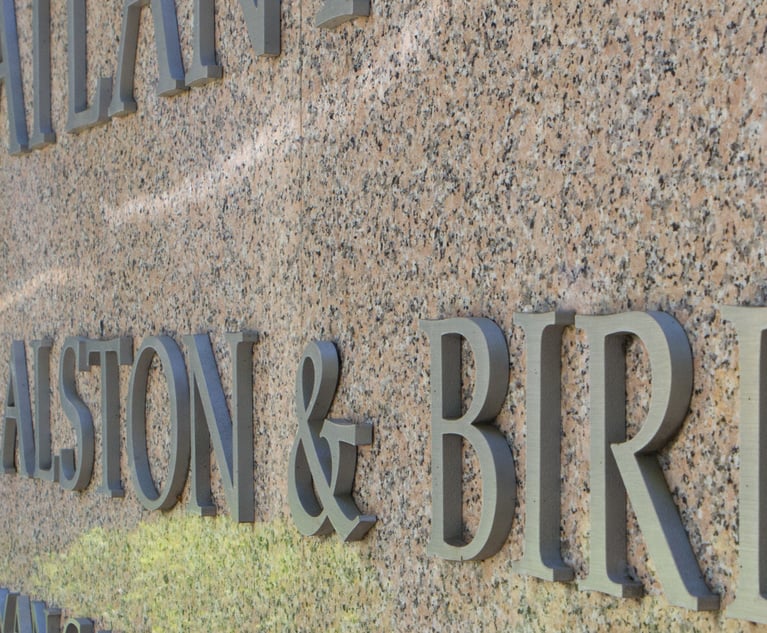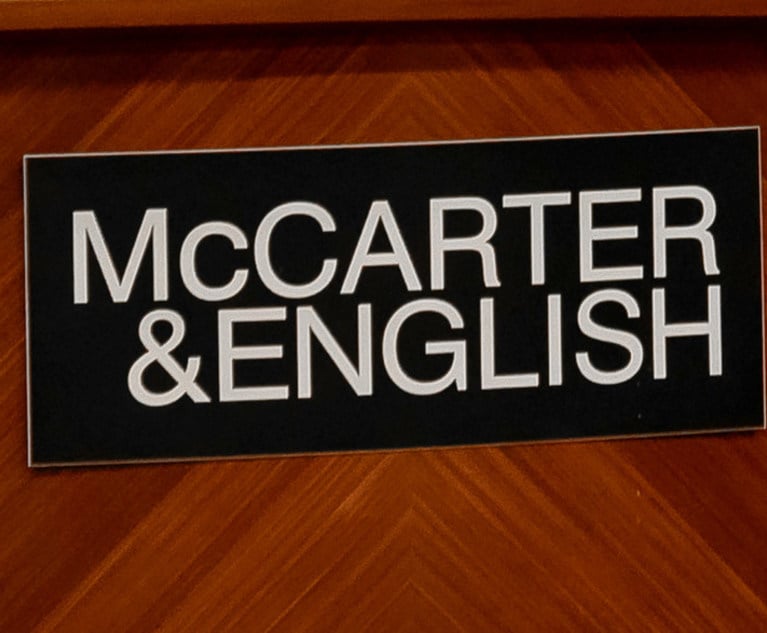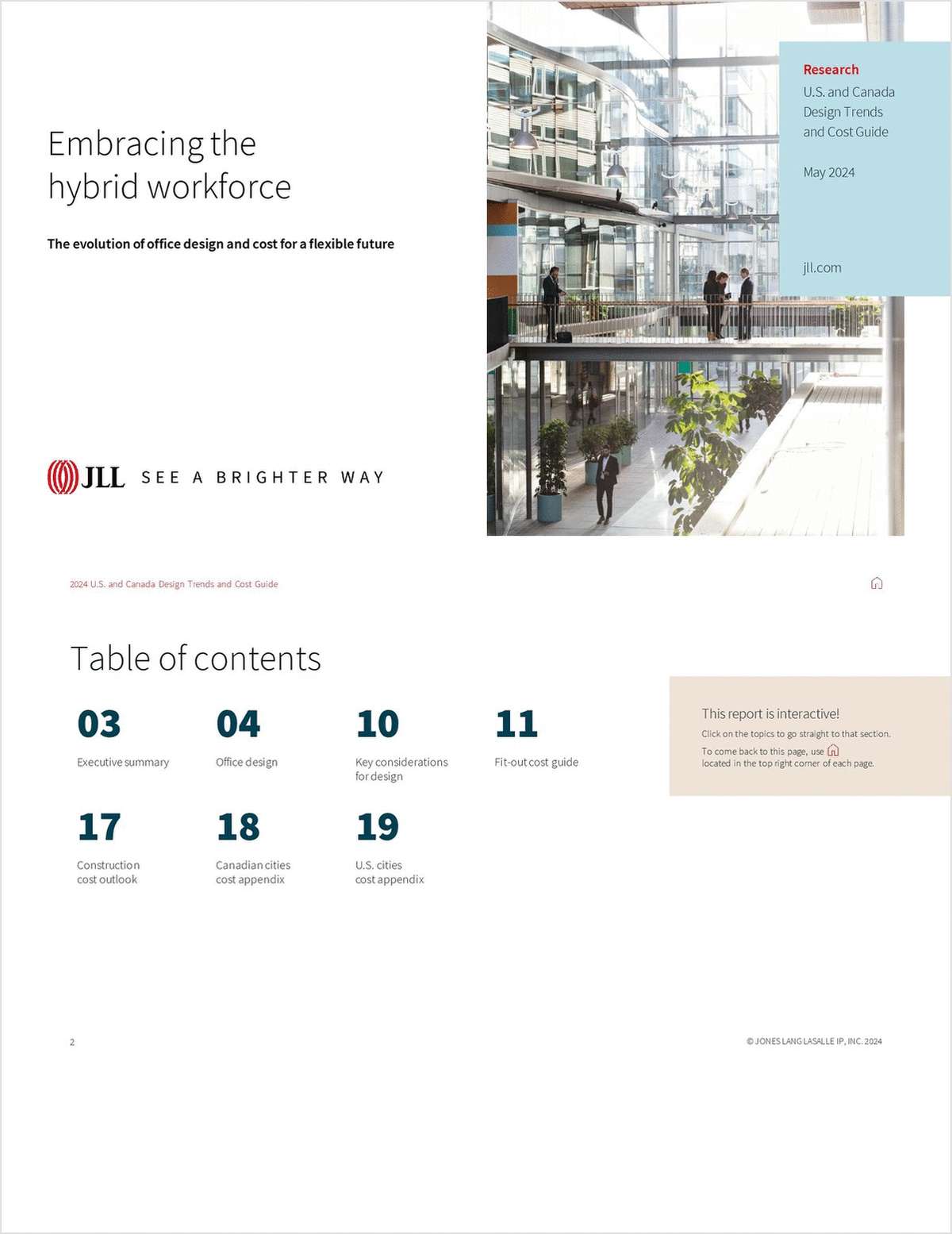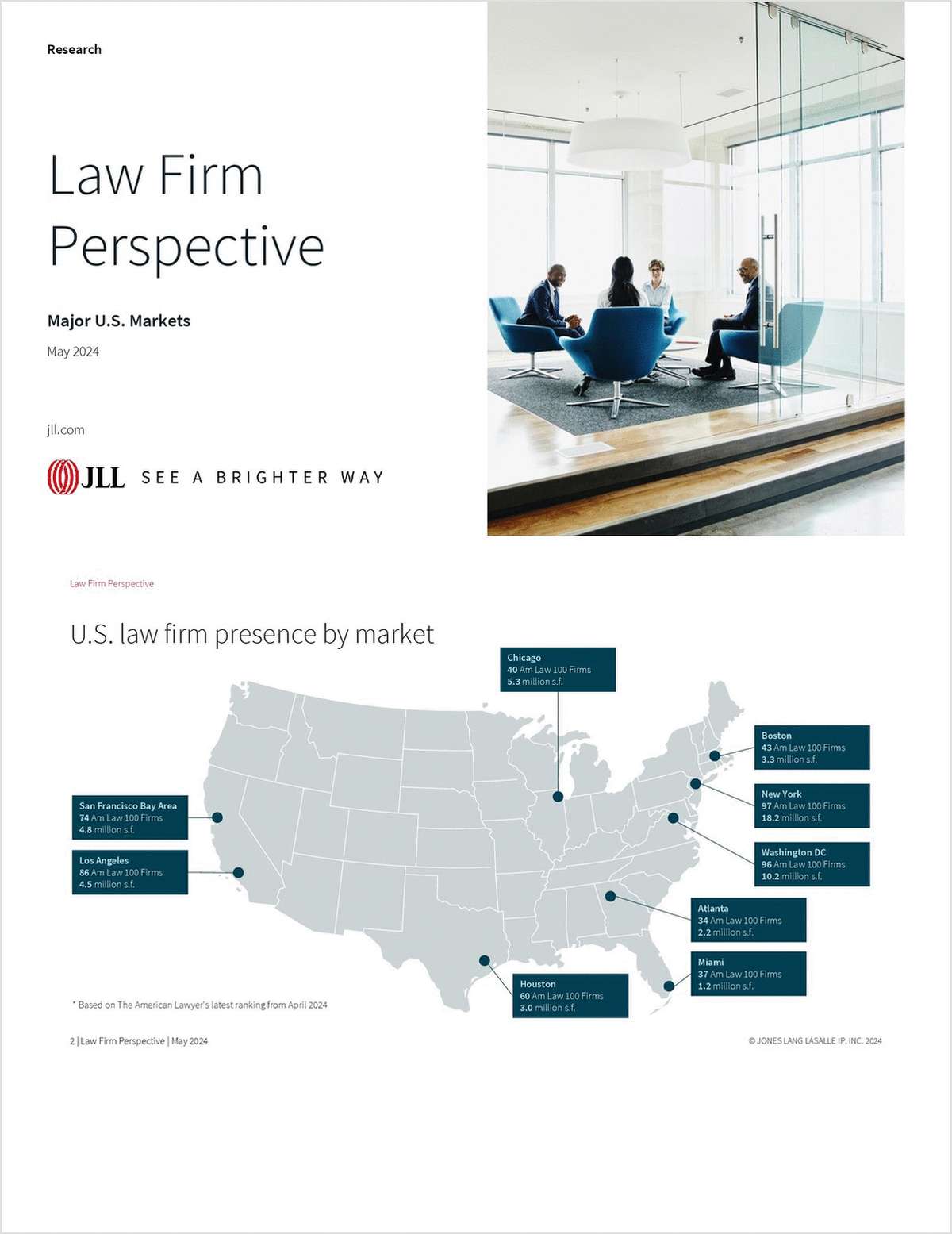 (Credit: Rawpixel.com/Shutterstock.com)
(Credit: Rawpixel.com/Shutterstock.com)More Firms Embrace Online Tools to Cement Client Relationships
Done right, law firm apps and other tools keep clients happy, generate paying work and prevent firms from having to cut rates to do low-cost work they don't want in the first place.
November 07, 2018 at 12:59 PM
7 minute read
Long before the advent of the digital age, law firms viewed providing clients with tools such as resource guides, books of legal forms and crisply produced regulation updates as smart marketing.
It didn't take long after the rise of the internet for savvy firms to take the same strategy online—with results that have become decidedly more sophisticated over time. Not only has advancing technology made it easier to build mechanisms that bolster client interactions, these online offerings are becoming crucial tools to preserve relationships with price-sensitive legal departments.
Recent law firm offerings include an O'Melveny & Myers “microsite” for nationwide automated vehicle regulations and a sprawling but searchable guide to the ever evolving global tariff landscape from Squire Patton Boggs. Earlier efforts by firms including Orrick, Akin Gump and Dechert have allowed clients to gauge readiness for the EU's landmark General Data Protection Regulation and Brexit, and to examine timetables for proposed U.S. trade agreements.
“Law firms recognize that we live in the era of finding instant answers to basic questions. Clients want to be able to find that answer quickly,” said Ari Kaplan, a legal industry expert with Ari Kaplan Advisors. “The law firm would rather that they went to the firm for those answers instead of a search engine, because when they have a follow-up that isn't as easily answerable, they would go to their firm instead of another online tool.”
Still, no matter how smartly designed a tool is, if it doesn't hit at an area of need, it's bound to be ignored, making it a waste of resources. It's one thing for marketing departments to identify the value of these efforts, but the light bulb must go off in an individual practice area.
That's what happened at Squire Patton Boggs, where international trade practice co-chair Frank Samolis asked his team to find a comprehensive list of tariffs affecting U.S. imports and exports once the number of jurisdictions announcing new trade restrictions grew to five.
“It turns out there wasn't one,” Samolis said, prompting the lawyers to assemble a guide themselves. They built a template, loaded it up with information, then—when they realized it made sense to share with clients—pulled marketing in and had them put out a client alert. Continuously updated, the list is currently 465 pages long, but easily searchable by the code attached to products by the U.S. International Trade Commission.
“You can access it, but you can't download it,” Samolis said. “That protects the sweat equity we put in.”
|'No Substitute' for Lawyering
The impulse was similar at O'Melveny, where intellectual property and tech litigator Melody Drummond Hansen recognized that the complexities of the emerging regulatory environment for automated vehicles matched what she'd seen earlier in her career for the mobile telecom business.
Clients were interacting with federal and state regulators, and some were even facing investigations from state Departments of Motor Vehicles and the federal National Transport and Safety Authority. Comprehensive information was hard to come by.
“It's no substitute for legal advice, but there's confusion among the general public about where the laws are,” Drummond Hansen said. “We thought it would be useful to provide a place to look and see where the current laws are so we would be able to emphasize some of the areas that we think are important and worth watching.”
After generating the idea, she pulled in a wide variety of resources around the practice and the firm: not just associates and partners, but also summer associates, of counsel attorneys and professionals in IT and marketing.
“That was a really fun process,” she explained. “We determined the main scope of what we would need to do, the flash pages, what kind of overview, some of the areas that we would want to focus on, then a system for keeping it in one place and updating it.”
Speaking just days after the “roadmap” went live, Drummond Hansen said she was surprised at how many clients and client contacts were looking at it.
“We certainly want to build and strengthen relationships with clients. We want the material to not just be marketing but be useful,” she explained. “Not self-congratulatory or flashy.”
|Good Business
Four months after Squire Patton Boggs launched its tariff book, Samolis said he has seen concrete results.
“A lot of times clients have asked us to address a very specific tariff issue,” he said. “Once they look, they come back and say, 'We think we have a bigger global supply chain issue. We'd like you to advise us on how we can restructure our global supply chain to avoid tariffs and focus on new market opportunities without additional tariffs.'”
Laura Meherg, a partner and founder at Wicker Park Group, works with firms to obtain feedback on their client relationships. Clients love these tools, she said, pointing to one recent interview where she heard praise for firms that made information easy to access.
“One aspect of it was being able to go on and self-sign-up for legal alerts and newsletters that were of interest to her without having to contact the lawyer and go back and forth with the marketing department,” Meherg said. “At the previous firm where she was in private practice, that was a challenge.”
At large firms like O'Melveny and Squire Patton Boggs, there's a wider benefit than just keeping clients engaged, particularly when these tools have a degree of interactivity that provides tailored answers. That's helpful to corporate law departments that are under increasing cost pressure.
Ross Fishman, a former litigator now at the helm of Fishman Marketing, said that often these firms have determined that offering a piece of technology or artificial intelligence that enables clients to do certain low-dollar work themselves helps them keep the client from going elsewhere. This prevents them from having to cut their rates on low-dollar work they don't want to do anyway.
“It's a legitimate value-add for the clients while also keeping the client happy with a free or low-cost service, and they get the public relations boost of looking like a tech-savvy, client-oriented firm,” he said. “It's good business.”
Kaplan sees the same thing, calling these tools “a very savvy way to keep people engaged even if you're not able to bill them for any time.”
John Witts, a senior marketing technology manager at Drinker Biddle & Reath and the co-chair of the Legal Marketing Association Marketing Technology Special Interest Group, only expects the trend to intensify. A study earlier this year from Bloomberg and the LMA found that 41 percent of marketing professionals found investment in technology to be particularly effective as a business development initiative.
Firms are realizing they need to meet their increasingly younger clients where they live: not just online, but on phones.
Thus, the trend is headed in the direction of mobile apps, even with only 5 percent of smartphone owners reporting using a legal services app in a recent study from LegalShield. Tech-focused international firm Bird & Bird has been at the vanguard, using app development platform Fliplet to launch 15 client facing apps.
Because mimicry drives the industry, expect others to fall in line.
“One firm does it successfully and you have your partners banging on the doors and saying we need to do this now,” Witts said.
Read More:
This content has been archived. It is available through our partners, LexisNexis® and Bloomberg Law.
To view this content, please continue to their sites.
Not a Lexis Subscriber?
Subscribe Now
Not a Bloomberg Law Subscriber?
Subscribe Now
NOT FOR REPRINT
© 2024 ALM Global, LLC, All Rights Reserved. Request academic re-use from www.copyright.com. All other uses, submit a request to [email protected]. For more information visit Asset & Logo Licensing.
You Might Like
View All
Vinson & Elkins: Traditional Energy Practice Meets Energy Transition
4 minute read

Former McCarter & English Associate Fired Over 'Gangsta Rap' LinkedIn Post Sues Over Discrimination, Retaliation
6 minute read
Trending Stories
- 1The Key Moves in the Reshuffling German Legal Market as 2025 Dawns
- 2Social Media Celebrities Clash in $100M Lawsuit
- 3Federal Judge Sets 2026 Admiralty Bench Trial in Baltimore Bridge Collapse Litigation
- 4Trump Media Accuses Purchaser Rep of Extortion, Harassment After Merger
- 5Judge Slashes $2M in Punitive Damages in Sober-Living Harassment Case
Who Got The Work
Michael G. Bongiorno, Andrew Scott Dulberg and Elizabeth E. Driscoll from Wilmer Cutler Pickering Hale and Dorr have stepped in to represent Symbotic Inc., an A.I.-enabled technology platform that focuses on increasing supply chain efficiency, and other defendants in a pending shareholder derivative lawsuit. The case, filed Oct. 2 in Massachusetts District Court by the Brown Law Firm on behalf of Stephen Austen, accuses certain officers and directors of misleading investors in regard to Symbotic's potential for margin growth by failing to disclose that the company was not equipped to timely deploy its systems or manage expenses through project delays. The case, assigned to U.S. District Judge Nathaniel M. Gorton, is 1:24-cv-12522, Austen v. Cohen et al.
Who Got The Work
Edmund Polubinski and Marie Killmond of Davis Polk & Wardwell have entered appearances for data platform software development company MongoDB and other defendants in a pending shareholder derivative lawsuit. The action, filed Oct. 7 in New York Southern District Court by the Brown Law Firm, accuses the company's directors and/or officers of falsely expressing confidence in the company’s restructuring of its sales incentive plan and downplaying the severity of decreases in its upfront commitments. The case is 1:24-cv-07594, Roy v. Ittycheria et al.
Who Got The Work
Amy O. Bruchs and Kurt F. Ellison of Michael Best & Friedrich have entered appearances for Epic Systems Corp. in a pending employment discrimination lawsuit. The suit was filed Sept. 7 in Wisconsin Western District Court by Levine Eisberner LLC and Siri & Glimstad on behalf of a project manager who claims that he was wrongfully terminated after applying for a religious exemption to the defendant's COVID-19 vaccine mandate. The case, assigned to U.S. Magistrate Judge Anita Marie Boor, is 3:24-cv-00630, Secker, Nathan v. Epic Systems Corporation.
Who Got The Work
David X. Sullivan, Thomas J. Finn and Gregory A. Hall from McCarter & English have entered appearances for Sunrun Installation Services in a pending civil rights lawsuit. The complaint was filed Sept. 4 in Connecticut District Court by attorney Robert M. Berke on behalf of former employee George Edward Steins, who was arrested and charged with employing an unregistered home improvement salesperson. The complaint alleges that had Sunrun informed the Connecticut Department of Consumer Protection that the plaintiff's employment had ended in 2017 and that he no longer held Sunrun's home improvement contractor license, he would not have been hit with charges, which were dismissed in May 2024. The case, assigned to U.S. District Judge Jeffrey A. Meyer, is 3:24-cv-01423, Steins v. Sunrun, Inc. et al.
Who Got The Work
Greenberg Traurig shareholder Joshua L. Raskin has entered an appearance for boohoo.com UK Ltd. in a pending patent infringement lawsuit. The suit, filed Sept. 3 in Texas Eastern District Court by Rozier Hardt McDonough on behalf of Alto Dynamics, asserts five patents related to an online shopping platform. The case, assigned to U.S. District Judge Rodney Gilstrap, is 2:24-cv-00719, Alto Dynamics, LLC v. boohoo.com UK Limited.
Featured Firms
Law Offices of Gary Martin Hays & Associates, P.C.
(470) 294-1674
Law Offices of Mark E. Salomone
(857) 444-6468
Smith & Hassler
(713) 739-1250










